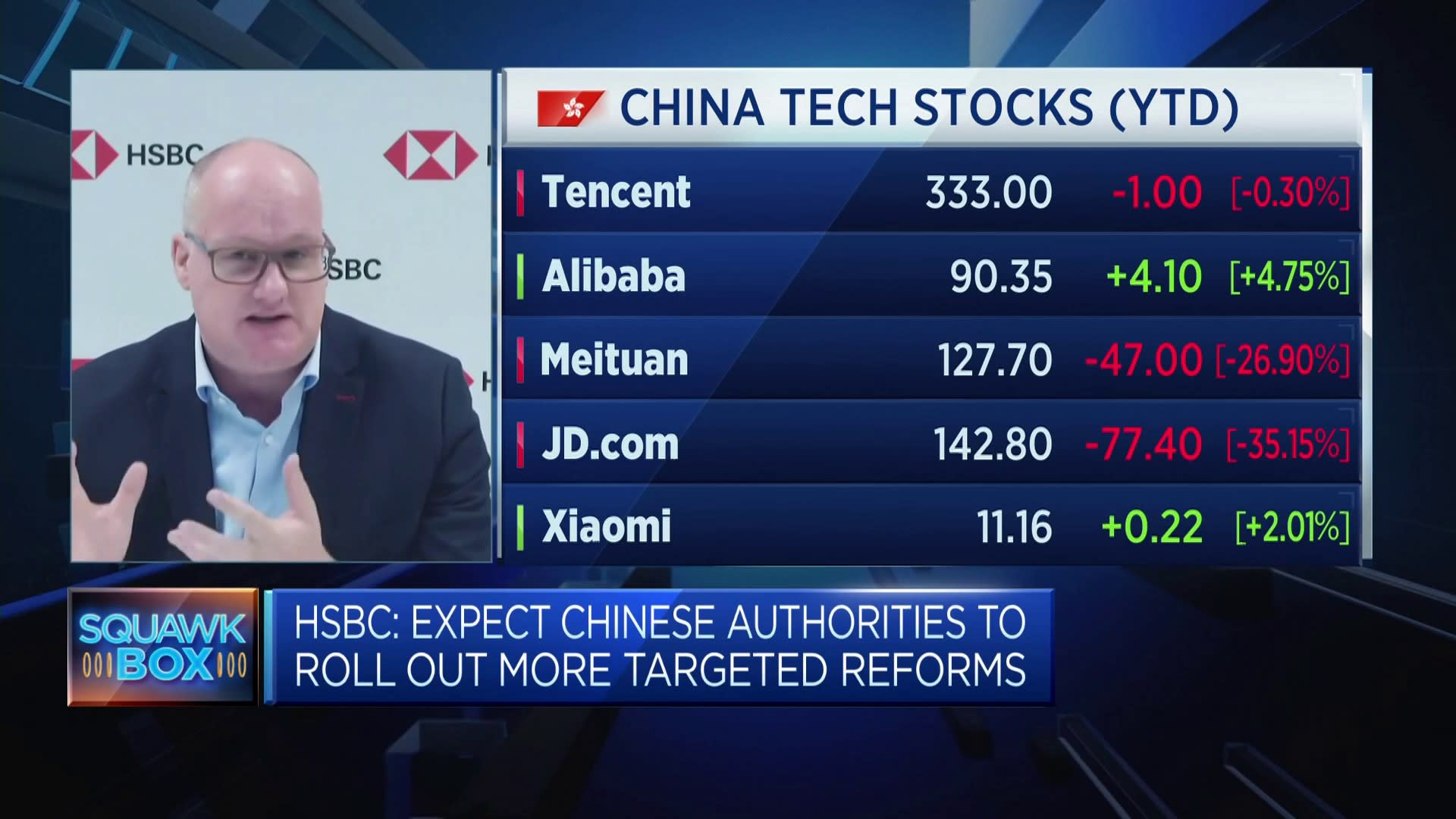Workers load goods for export onto a crane at a port in Lianyungang, Jiangsu province, China June 7, 2019.
Reuters
BEIJING – International investment firms have changed their China GDP forecasts nearly every month so far this year, with JPMorgan making six adjustments since January.
That’s according to CNBC analysis of the firms’ notes. JPMorgan did not immediately respond to a request for comment.
The U.S. investment bank most recently cut its China GDP forecast in July to 5%, down from 5.5% previously.
That came alongside cuts this month by Citi and Morgan Stanley to 5%.
The average prediction among six firms studied by CNBC now stands at 5.1%, close to the “around 5%” target Beijing announced in March.
Citi’s latest forecast marks the firm’s fourth change this year. Morgan Stanley has only adjusted its forecast once since it was set in January.
During that same period, Nomura changed its forecast four times, while UBS adjusted it three times and Goldman Sachs changed forecasts twice.

The investment banks mostly revised their forecasts higher early this year after China’s initial rebound, following three years of strict Covid controls.
Quarter-on-quarter revisions
The latest cuts come as recent economic data point to slower growth than expected, and authorities show little inclination to embark on large-scale stimulus. Second-quarter GDP rose by 6.3% from a year ago, missing the 7.3% growth that analysts polled by Reuters had predicted.
The disappointment in second-quarter GDP growth, however, is due to official revisions to China’s quarter-on-quarter growth last year, according to Rhodium Group’s Logan Wright and a team.
The resulting low figure helps Beijing make a case for supporting the economy, the analysts said in a July 17 report. “Understand what you are seeing in this year’s GDP data: these are artificially constructed narratives for various audiences, not reports on China’s economic performance.”
The National Bureau of Statistics did not immediately respond to CNBC’s request for comment.
Instead of releasing multiple reads of data, the bureau discloses quarterly GDP relatively soon after the end of the period, and subsequently issues revisions.
The statistics bureau has also issued public statements about punishing local governments for falsifying data. The accuracy of official data in China has long been in question.
Goldman Sachs on Friday noted the seasonal revisions, but maintained its 5.4% forecast for China’s growth. “On net, we do not think the surprises are either consistent or large enough for us to make major adjustments to our China growth forecast this year.”
Non-official data
Researchers have sought alternatives to gauge growth.
One organization is the U.S.-based China Beige Book, which claims to regularly survey businesses in China in order to put out reports on the economic environment.
Earlier this year, the firm’s data “showed there was no revenge spending wave or a bombastic recovery,” said Shehzad Qazi, New York-based managing director at China Beige Book.
“Wall Street’s predictions of blockbuster growth in China were first based on hype, and then juiced up by China’s inflated GDP prints into early 2023.”
Qazi testified this month at a hearing of the U.S. House Select Committee on the Chinese Communist Party.
Investment bank research is often known as the “sell-side,” since it is meant to inform buyers about financial products and company stocks.
In the case of China, Qazi pointed out that “investment banks are not only incentivized to sell a ‘China booming’ story, but given their business interests in China, they are also unwilling to publish any views that can be seen as critical of China’s economy.”
Institutional predictions
The World Bank and International Monetary Fund also put out regular economic forecasts for China and other countries. However, their reporting schedule means that predictions may not fully match current the current economic situation.
In June, the World Bank raised its forecast for China’s growth this year to 5.6%, up from 4.3% previously.
The International Monetary Fund in April raised its forecast for China’s GDP to 5.2%, up from 4.4% previously. This month, its spokesperson noted that growth was slowing in China, and said an “updated forecast” would be reflected in the IMF’s next World Economic Outlook.
Chinese officials have in the last several weeks emphasized the country is on track to reach its annual growth target of around 5%.
Among the six investment firms CNBC looked at, the highest China GDP forecast so far this year was JPMorgan’s 6.4% figure — when the bank adjusted for the second time in April alone.
In all, the range of the firm’s forecasts have spanned 1.4 percentage points, the most of any of those in the CNBC analysis.
Looking beyond 2023
Although businesses and investors have expressed uncertainty about China’s near-term economic trajectory, analysts expect growth in the world’s second-largest economy will still pick up in the longer term.
“Overall, there is a case emerging for a cyclical rebound in China’s economy in early 2024, even without any meaningful policy support in the second half of 2023,” the Rhodium analysts said.
They said that given four quarters, a steady household consumption recovery should help boost service sector employment, while industrial inventories will likely need restocking down the road.




